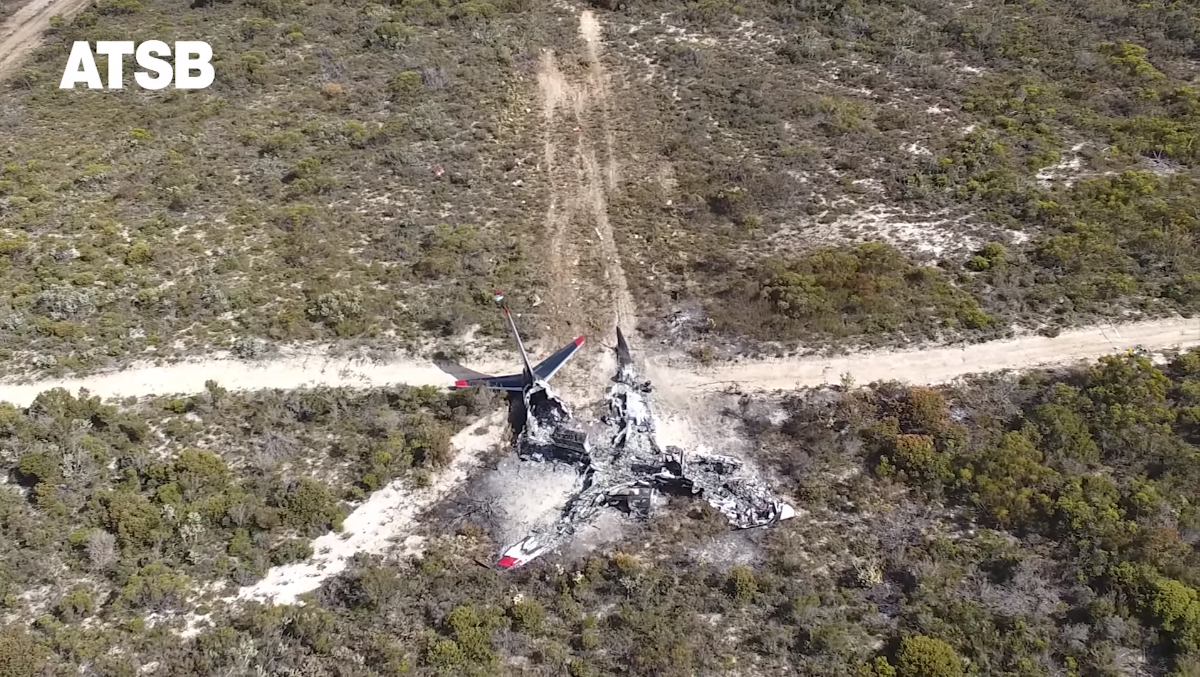
A Boeing 737 large air tanker was attempting a second drop of fire retardant when it struck a ridgeline and crashed in Western Australia’s Fitzgerald River National Park three months ago, the ATSB says.
The cause of the crash of the Coulson Aviation-operated 737 air tanker, which occurred during firefighting activities on 6 February, has not yet been identified in the ATSB’s preliminary report. The 737, callsign “Bomber 139”, was making a second drop after releasing three quarters of its retardant tank on the first go-around.
According to ATSB Chief Commissioner Angus Mitchell, the aircraft had been tasked with tagging and extending an existing retardant line and had descended through 400ft altitude at 110 knots just before the impact with the ground.
“Flight recorder data shows the throttles were advanced and the engines had accelerated just before the aircraft struck a ridgeline with the stick shaker activating. The aircraft then cleared a small line of foliage, before impacting the ground a second time and sliding to rest,” said Mitchell.
“Fortunately, and remarkably, both pilots were able to exit the aircraft through a cockpit window, and suffered only minor injuries.”
The aircraft was subsequently consumed in a post-impact fire.
“Despite extensive fire damage, ATSB recorders specialists in our Canberra technical facilities were able to download files from both the flight data recorder and cockpit voice recorder,” Mitchell said.
“As well as information from those recorders, interviews with the flight crews, a 3D map of the accident site created using a drone, and other recorded flight information will be instrumental to the ongoing investigation.”
ATSB investigators have also collected documents and recorded data from the operator as well as records from the WA Department of Fire and Emergency Services.
“The investigation is continuing and will include validation of the recorded data and reviews of the communication procedures for bird-dog and large air tanker pilots, the operator’s crew resource management procedures and practices, and standards and safety margins for 737 retardant drops.”
The preliminary report notes that following the accident, the operator increased their large air tanker minimum retardant drop heights and airspeeds.
Mitchell said that a final report, containing findings and the analysis to support those findings, will be released at the conclusion of the investigation.
“However, should a critical safety issue be identified at any time during the course of the investigation, the ATSB will immediately notify relevant parties so appropriate and timely safety action can be taken.”















